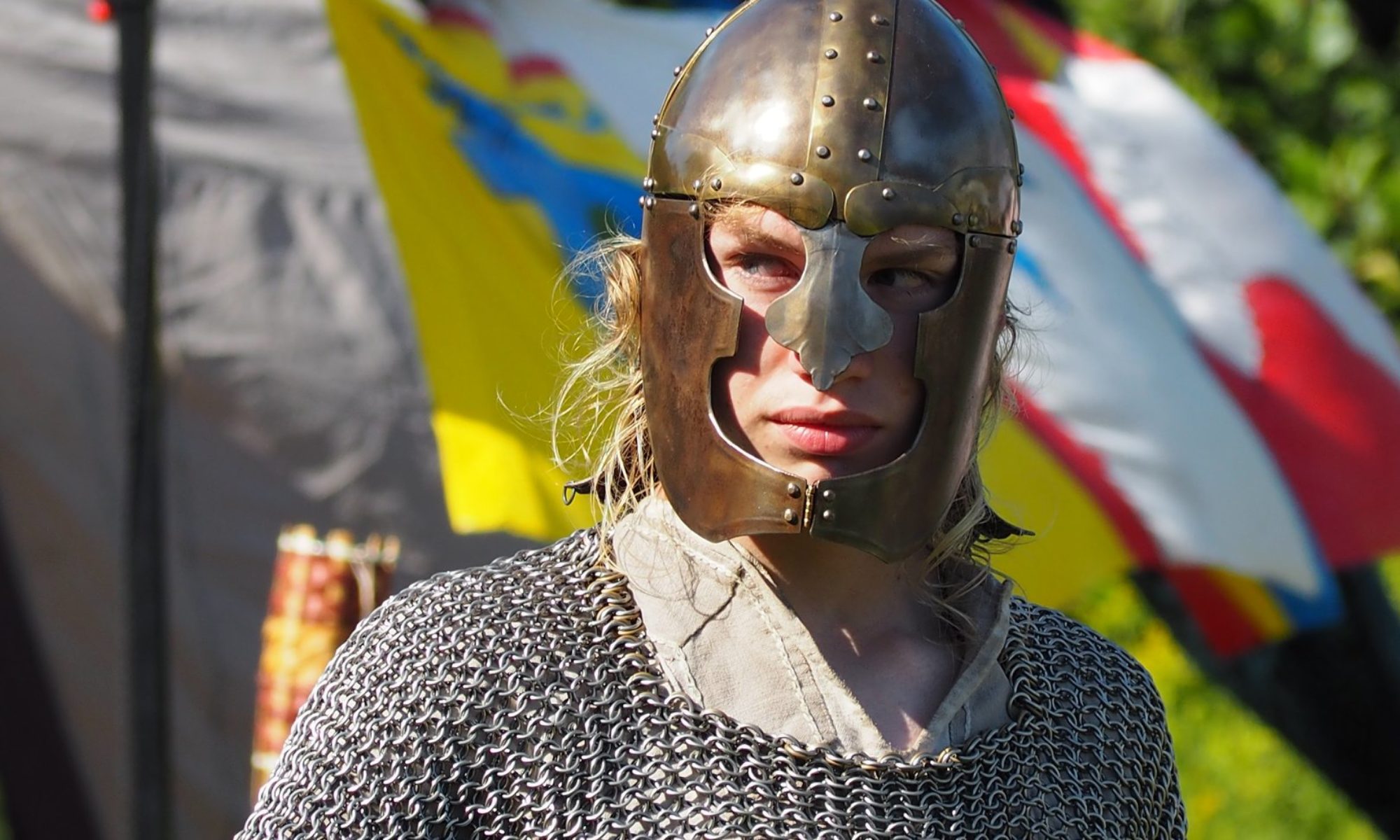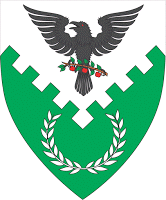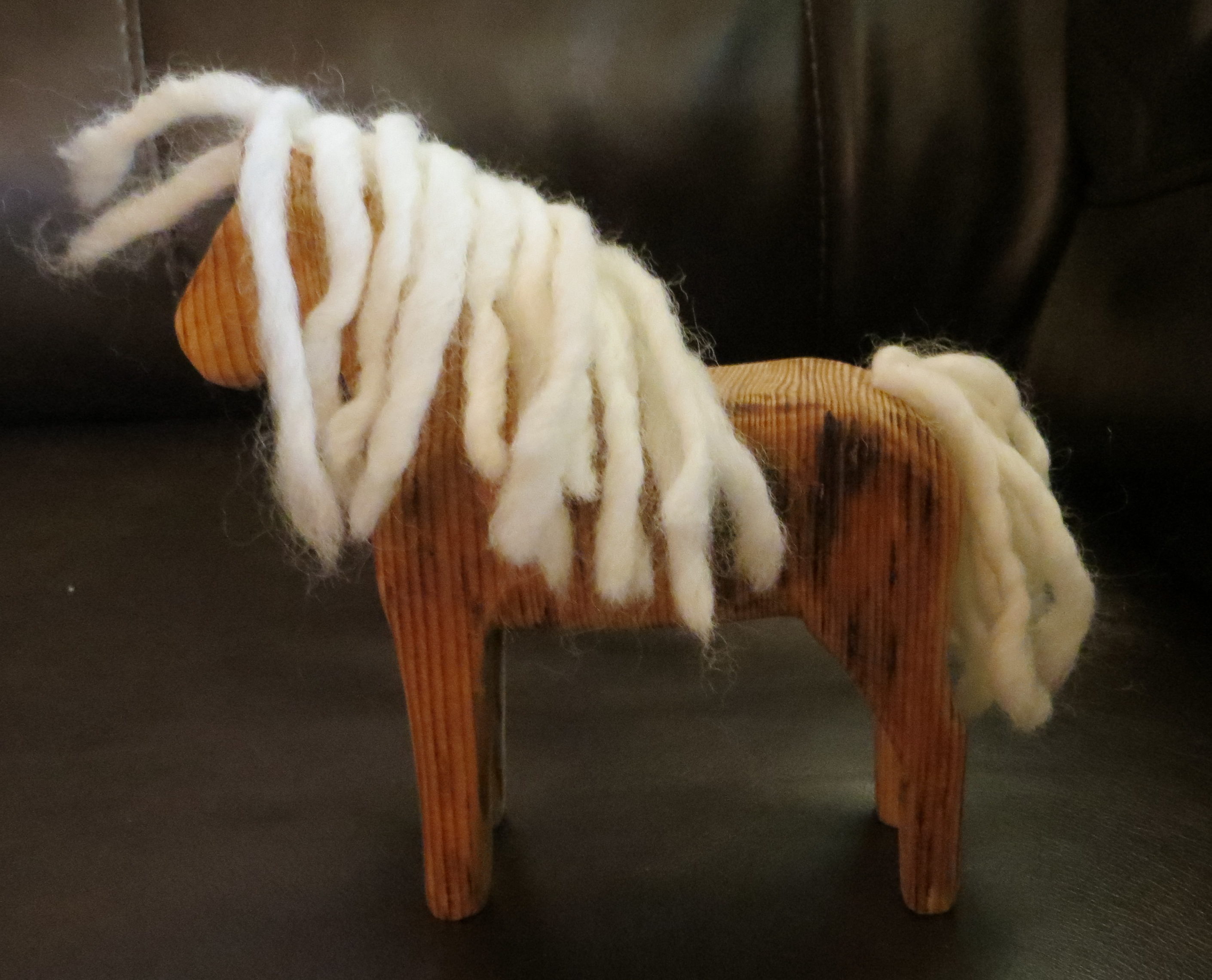By Lady Freydis Egilsdottir
Toy horses made of wood have been around since the Viking Age, at the least, and are still around, so I thought it would make a nice “Happy Becoming A Big Brother” present for Lord Almeric and Mave’s son Drake.
I found a design that had longer legs than the Norse finds; but the Norse finds were cut with the grain running horizontally, not vertically, so it is entirely possible the legs were accidentally knocked off after they were made; I could only find photos of two and am not able to examine the leg stubs for signs of tool shaping or breakage. However, since the horses in various rune stones have full-length legs, I don’t think it is a stylistic choice. Therefore I went with a design traced off a picture of a wooden toy horse (on wheels, which I left off) from the Victorian era.
I was lucky enough, however, to have access to some scrap from an unrelated project made from 200-year-old barn timbers. This is extra cool because I counted the rings on the board I cut it from and there were 105. Looking at how tight the grain was every twenty years or so, and considering that I had neither the “live” outside edge of the tree represented nor the heart wood, I think I can safely say that the tree must have been at a bare minimum fifty years older, and possibly much more.
Which means that the tree was at least a sapling in 1650 CE, which is a pretty awesome thing to be able to say about an SCA toy.
The supplier didn’t know what kind of wood it is, but going by Mikhail’s and my own experience, we figure spruce.
I traced the picture out in CorelDRAW, which allows me to easily resize, printed it out, glued it to the wood, and used the bandsaw to cut it out. Final shaping was done with a spindle sander, vertical belt sander, and by hand with rasps, chisels, and sand paper.
I cut a groove for the mane and drilled a hole for the tail, and finished it off with a few coats of boiled linseed oil, which two separate professional woodworking sites confirm is both child- and food-safe when fully cured.
The mane and tail are made from unbleached rough-spun wool and glued into place with the one modern construction material: carpenter’s glue.
I considered mounting it onto a rolling platform with a string, the same as the Victorian version, but did not because the Norse ones do not seem to have used them; and in my experience, even with a very level surface, they tend to be tippy, which is frustrating; and I wanted a toy that could be played with anywhere.
He is about five and a half inches high, and about one and a quarter inches thick.




